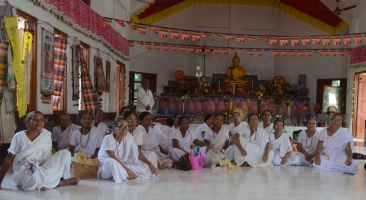After the first Tai community crossed the Patkai Hills in the thirteenth century, numerous Tai groups of South and Southeast Asia have, since then, migrated to and settled in Assam. Of all of these Tai peoples, the Tai Khamyang group is one of the lesser documented. After leaving their home in Mong-Mao in the thirteenth century itself, they finally settled in Assam in the nineteenth century, after ages of leading a wanderer lifestyle. Followers of Theraveda Buddhism, these communities are spread out across Assam in parts of Jorhat, Gplaghat, Tinsukia and Sivasagar in communal villages. Over the years, they have assimilated into the mainstream Assamese society in terms of adopting the Assamese language and political identity, but they still hold on zealously to their inherited traditions and sociocultural customs. This module is an attempt to explore the unique balance of cultural assimilation and preservation of communal identity, based on ethnographic fieldwork in the region, and oral histories of the residents of the villages. The question of ‘home’—the home left behind and the adopted homeland—and the materiality/immateriality of memory is extensively explored. There is also specific focus on the orally transmitted folklore, folk songs and folk knowledge within the community.

Chandrica Barua
Chandrica is an independent researcher with an undergraduate degree in Medieval Literatures and Cultures from the University of Edinburgh, United Kingdom. She is interested in themes of memory, trauma, gender and sexuality, post-structuralism, and folkloristics. She is currently based in Jorhat, Assam, and aspires to travel the world.
